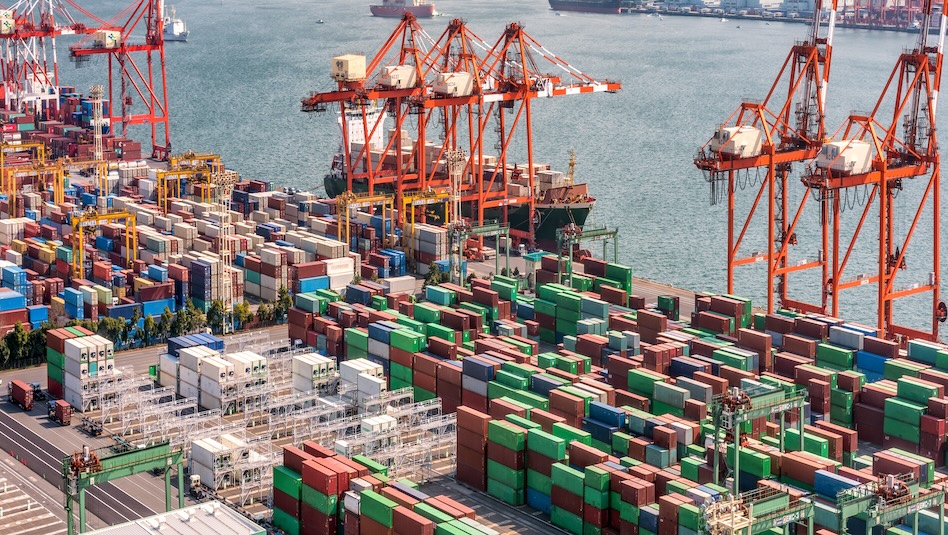




Philippines Trade Update: Exports momentum continues
 DOWNLOAD
DOWNLOAD

Quarterly Economic Growth Release: More BSP cuts to come
 DOWNLOAD
DOWNLOAD

Monthly Economic Update: Fed catches up
 DOWNLOAD
DOWNLOAD


External debt hits record USD 139.6B as of Sept.

The Philippines’ outstanding external debt hit another record high as of end-September, the Bangko Sentral ng Pilipinas (BSP) said.
Data from the central bank showed external debt jumped by 17.5% to USD 139.64 billion as of end-September from USD 118.83 billion in the same period in 2023.
The debt stock also rose by 7.3% from USD 130.18 billion as of end-June.
External debt includes all types of borrowings by residents from nonresidents.
“The increase was primarily driven by total net availments by both public and private sector borrowers as well as the net acquisition of Philippine debt securities by nonresidents,” the BSP said.
The annual increase in outstanding external debt was also driven by public sector net availments recorded at USD 7.94 billion for the 12-month period. Meanwhile, private sector borrowers accumulated net availments of $6.63 billion for the same period.
“Year-on-year net acquisitions of Philippine debt securities by nonresidents surged to USD 5.03 billion, reflecting sustained investor confidence in Philippine credit,” the BSP said.
“Positive FX (foreign exchange) revaluation of borrowings denominated in other currencies of USD 860.86 million and prior years’ adjustments of USD 347.63 million further contributed to the increase in debt stock,” it added.
However, the BSP said that the external debt as a percentage of gross domestic product (GDP) remains at a “prudent” level despite the rise in the debt stock.
The external debt-to-GDP ratio stood at 30.6% at end-September, up from 28.9% in the previous quarter.
The central bank said other key external debt indicators were still at “sustainable levels.”
As of end-September, gross international reserves (GIR) stood at USD 112.71 billion and represented 3.92 times cover for short-term debt based on the remaining maturity concept.
“The debt service ratio (DSR), which relates principal and interest payments (debt service burden) to exports of goods and receipts from services and primary income, rose to 11.6% from 10.4% for the same period last year due to the higher recorded debt service payments from January to September 2024.”
The DSR and the GIR cover for short-term debt is a gauge of the adequacy of foreign exchange earnings to meet maturing debt obligations.
Meanwhile, the central bank attributed the quarter-on-quarter rise in the debt stock due to the “liquidity requirements of the public and private sector as well as the increase in nonresidents’ investment appetite for onshore debt securities.”
“In particular, the National Government (NG) raised an aggregate of USD 4.17 billion during the quarter headlined by its triple-tranche fixed-rate global bonds issuance,” it said.
In August, the government raised USD 2.5 billion from its sale of triple-tranche US dollar-denominated global bonds, its second and final global bond offering for the year.
“The NG also raised USD 1.44 billion from official creditors to finance its various development programs/projects,” the BSP said.
“Private sector corporations likewise sought the offshore market to expand their funding base and augment their working capital with its net availments for the quarter aggregating USD 1.82 billion.”
The central bank also noted a USD 2.77-billion net acquisition by nonresidents of Philippine debt securities as investors sought yields in emerging markets due to the anticipated rate cut by the US Federal Reserve in September and a weaker dollar during the third quarter.
“The positive FX revaluation of borrowings denominated in other currencies due to the relative weakening of the US dollar (largely against the Japanese yen) further increased the US dollar value of the country’s debt stock by USD 1.56 billion.”
“Negative prior periods’ adjustments slightly tempered the increase by USD 248.77 million,” it added.
BSP data showed the private sector’s external debt went up by 4.8% to USD 52.76 billion at the end of September from $50.36 billion in end-June.
“The growth in private sector borrowings was mainly driven by a USD 2.52 billion increase in local banks’ other liabilities as they tapped the offshore markets to address their funding requirements and support asset growth,” it said.
Meanwhile, public sector debt increased by 8.8% quarter on quarter to USD 86.88 billion from USD 79.83 billion. This was driven by net availments of $3.56 billion and net acquisitions by nonresidents of Philippine peso-denominated government debt securities of $2.17 billion.
“Additionally, the relative depreciation of the US dollar against other currencies increased the US dollar equivalent of public sector borrowings denominated in other currencies by USD 1.4 billion,” it added.
In September, the peso was trading at the P55- to P56-per-dollar level.
Data showed the bulk (92.2%) of public sector obligations were from the NG while the rest came from borrowings of government-owned and -controlled corporations, government financial institutions, and the BSP.
As of end-September, the Philippines’ top creditor countries were Japan (USD 15.38 billion), the Netherlands (USD 4.61 billion), and the United Kingdom (USD 4.51 billion).
The external debt stock mix was composed mainly of US dollar-denominated debt (74.5%) followed by Philippine peso (9.1%) and Japanese yen (7.8%).
“The higher external debt largely due to wider budget deficits in some months this year and also to frontload some foreign borrowings amid geopolitical risks and possible protectionist policies by Trump that could lead to higher US inflation,” Rizal Commercial Banking Corp. Chief Economist Michael L. Ricafort said.
He also noted the government’s strategy of diversifying its funding sources and providing supply of Philippine debt in the global market which would result in “more trading and market liquidity of Philippine sovereign global bonds.”
“However, there is a need to manage forex risks involved in foreign borrowings amid exchange rate volatility in recent months that could add to debt servicing costs of the NG,” he added. — Luisa Maria Jacinta C. Jocson
This article originally appeared on bworldonline.com





 By BusinessWorld
By BusinessWorld